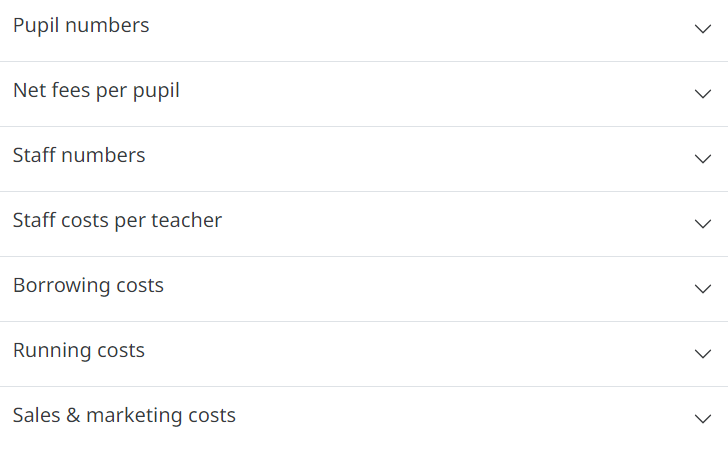Input boxes

The input boxes allow you to make assumptions about how a particular income or expenditure variable changes over the course of the 5-year projection. The input boxes have the flexibility to allow you to specify your assumptions in three different ways.
These are as follows:
| Input adjustment | Explanations |
|---|---|
Same for all years  |
By default the input boxes for years 2 to 5 will replicate the input for the year 1 input box. By switching this toggle off you are able to input a different assumption for every year. |
Units  |
The default units are a percentage increase (%) for each year, where the value of a variable next year is calculated as: \[ Variable \space last \space year \times (1 + increase) \]The units can be switched to No. (or £ in the case of monetary variables). In these cases the value of a variable next year is calculated as:\[ Variable \space last \space year + increase \] |
Input type  |
By default the input type is set to increase. This means the value of a variable next year is adjusted by the value you type in the input box. Changing the input type to Re-stated value means the value of a variable next year is replaced by what you type in the input box. |
Variables

There are seven variables which can be adjusted to see how they impact your school’s surplus over the course of the 5-year projection period. To access the input boxes click the the downward facing arrow to the right of the variable name. To hide the input boxes for a variable click the arrow again.
The variables which can adjusted are as follows:
| Variable type | Explanations |
|---|---|
| Income All else being equal, an increase in an income variable will lead to a higher income and larger surplus. |
Pupil numbers - The total number of pupils in your school. Net fees per pupil - Calculated as the total net fees divided by the number of pupils. |
| Expenditure All else being equal, an increase in an expenditure variable will lead to a higher expenditure and a lower surplus. |
Staff numbers - Staff numbers have been split so teaching, teaching support, and non-teaching staff numbers can be adjusted separately. Staff costs per teacher - Staff costs have also been split so teaching, teaching support, and non-teaching staff costs can be adjusted separately. Borrowing costs - your school’s total borrowing costs. Running costs - your school’s total running costs. Sales & marketing costs - your school’s total sales & marketing costs. |